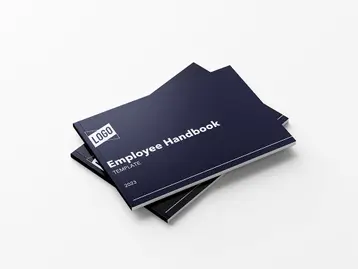What is Employee Experience and Why Is It Important?

Table of contents
- 1.Understanding Employee Experience
- 2.How Employee Experience Has Changed
- 3.Company Culture
- 4.Workplace Environment
- 5.Technology
- 6.Benefits
- 7.The Benefits of a Great Employee Experience
- 8.Improved Productivity
- 9.Lower Rates of Absenteeism
- 10.Stronger Employee Retention
- 11.Higher Quality Work
- 12.Enhanced Customer Satisfaction
- 13.5 Stages of Employee Experience
- 14.How to Improve Employee Experience
- 15.Create an Outstanding Onboarding Experience
- 16.Utilize Employee Engagement Surveys
- 17.Invest in Your Employees’ Well-Being
- 18.Focus on High-Quality Leadership
- 19.Offer Support for Hybrid Work
- 20.Provide Learning and Development Opportunities
Employee experience is how your team internalizes their interactions with your company. It encompasses everything from the flow of the workday and company culture to benefits and compensation. Low employee satisfaction or employee experience tends to be associated with toxic company cultures, while high employee experience businesses enjoy more growth and a scalable enterprise. So, how can you achieve an optimal employee experience? The first step is to fully understand the concept of employee experience and its characteristics.
Understanding Employee Experience
Over the years, employee experience has evolved significantly. It may have been an afterthought in the past, but today, small business owners need to prioritize it to attract and retain top talent. To create a positive employee experience, business owners need to understand the various components involved and how they impact overall well-being.
How Employee Experience Has Changed
The biggest shift in employee experience revolves around compensation and benefits versus company culture. In the past, business owners believed the only things that mattered were salary, benefits and job perks. Today, employees are more concerned about their overall work environment and their employer’s commitment to their well-being. A focus on work-life balance, career development and a strong company culture is more desirable than ever. While salary, compensation and benefits are still important, they’re not everything.
Company Culture
Company culture sets the tone for the overall employee experience. It includes everything from your company’s mission statement, values and beliefs to the day-to-day behaviors within the organization. Strong company culture helps foster a sense of belonging and can make or break employee experience. To strengthen your company culture, make sure that you integrate open lines of communication and mutual respect among leadership and your employees.
Workplace Environment
The physical and psychological environment significantly impacts the employee experience. You should invest in comfort and efficiency in your office so your team feels cared for. Aim to have furniture that prioritizes ergonomics. Try to boost the natural light in your building and consider bringing in some real plants to help enhance the mental health of your team. You may also want to look at incorporating communal areas for employees to meet and socialize or work together on various projects. A workplace environment that inspires and energizes can make a big difference in employee satisfaction and overall experience.
Technology
In today's digital age, technology is crucial in shaping the employee experience. Providing employees with modern tools and technologies streamlines work processes, increases efficiency, and improves communication and collaboration.
Benefits
Finally, competitive benefits that include healthcare, retirement planning and other non-traditional components will strongly impact the employee experience. Employers should try to design benefits packages that cater to the diverse needs of their employees while promoting work-life balance and overall well-being.
The Benefits of a Great Employee Experience
Putting in extra effort to create a great employee experience is more than boosting employee satisfaction. It’s a strategic investment in the current and future success of your small to medium-size business. When your workforce feels valued, they become more productive, motivated and committed to your company's short- and long-term success. Some of the most notable benefits of a positive employee experience include the following:
Improved Productivity
A positive employee experience is directly correlated to increased productivity. When your team feels happy and valued, they’re more likely to put in the effort to go the extra mile. Happy employees tend to be more motivated to achieve their professional goals, which can support higher revenue opportunities and help your business scale over time.
Lower Rates of Absenteeism
A great employee experience also tends to translate to lower rates of absenteeism. A happy team tends to be more likely to show up at work, both literally and figuratively. They’re more present in the tasks they do and feel a stronger sense of responsibility to succeed with their responsibilities. This can help maximize operational efficiency while supporting a more engaged team.
Stronger Employee Retention
Employees who are committed to their organization are less likely to leave their position, thus boosting retention rates and decreasing the cost of turnover. Individuals who feel happy and engaged in their roles are loyal to their organizations and can help business owners retain stability and continuity within the company. This also greatly reduces unnecessary spending otherwise needed for talent acquisition, onboarding and development.
Higher Quality Work
A positive employee experience also translates into higher-quality work. Employees who feel valued and supported take pride in their work and strive for excellence. They’re more likely to pay attention to detail, consistently deliver their best work and feel accountable to their teammates.
Enhanced Customer Satisfaction
Customer satisfaction is also directly linked to employee experience. Employees who are engaged and motivated are more likely to provide exceptional customer service. They go the extra mile to understand and meet customer needs, offer personalized solutions and create positive interactions. This leads to more satisfied customers, who become loyal to your business and offer referrals or recommendations to their friends and family.
5 Stages of Employee Experience
Five distinct stages of employee experience encompass each individual’s journey through your organization. It begins with recruitment and onboarding and finishes with their exit from the company. More information on each stage is as follows.
- Recruitment—this sets the foundation for the employee experience and involves attracting and selecting the right candidates for open positions. A well-defined recruitment process that focuses on finding individuals who align with the company's values and goals can lead to a more seamless integration into the organization.
- Onboarding—this stage helps integrate employees into your company. It should help new hires feel welcomed, informed and connected from day one. Strong onboarding sets the stage for an employee’s future success by providing the necessary resources, training and support.
- Development—this stage focuses on fostering the growth and advancement of employees through ongoing learning and development. It may include aspects of performance management, feedback surveys, mentorships and career progressions.
- Retention—this involves creating an environment where employees feel valued and supported in their roles. It includes recognition along with opportunities for advancement within the organization.
- Exit—this refers to an employee's departure from the organization, whether through retirement, resignation or termination. Exit interviews can help you gain valuable insight and address any potential areas that need improvement within your organization.
How to Improve Employee Experience
In today's competitive market, small to medium-size business owners need to prioritize the well-being and engagement of their workforce to maintain a strong team. A positive and fulfilling employee experience increases productivity and job satisfaction while enhancing employee retention. To help, consider some of the following ways to improve the employee experience.
Create an Outstanding Onboarding Experience
Onboarding sets the tone for an employee's entire journey within your company. By providing a well-structured and personalized onboarding experience, you can help new hires feel welcomed, informed and supported from day one. This can make acclimation easier while fostering a sense of belonging. Investing time in comprehensive orientation, mentorship programs and clear communication channels can help enhance the onboarding experience.
Utilize Employee Engagement Surveys
You can gain valuable insights into your employees’ satisfaction and needs by administering regular employee engagement surveys. Strategic use of these can help you find areas in need of improvement, allowing you to take a proactive approach to employee experience. This further demonstrates your commitment to your team, which can help strengthen overall trust and loyalty.
Invest in Your Employees’ Well-Being
With evolving work dynamics in addition to professional and personal stressors, your workforce’s well-being should be a high priority. Small business owners can consider offering flexible work arrangements, wellness programs and various mental health support to invest in their teams’ long-term happiness and success.
Focus on High-Quality Leadership
Your employees are only as strong as their leader, so make sure that you hire or train individuals who can motivate and inspire. They should offer guidance and lead by example rather than micromanage or use destructive criticism.
Offer Support for Hybrid Work
After the pandemic, hybrid work options have become increasingly sought after. As a small business owner, consider ways that you can offer flexible working arrangements without damaging the productivity or flow of your organization. Depending on your industry, this might include things like flex hours or remote options.
Provide Learning and Development Opportunities
Finally, invest in your team by providing various learning and development opportunities. This shows a commitment to your team and helps you prepare employees for internal growth within your company.
At the end of the day, the best way to improve employee experience is to treat them well and listen to their needs. To help, partner with TriNet. With TriNet, SMBs can gain access to traditional healthcare and insurance benefits alongside a variety of non-traditional benefits that don’t break the bank. Learn more about how TriNet can help support your journey towards a strong employee experience today.

TriNet Team
Table of contents
- 1.Understanding Employee Experience
- 2.How Employee Experience Has Changed
- 3.Company Culture
- 4.Workplace Environment
- 5.Technology
- 6.Benefits
- 7.The Benefits of a Great Employee Experience
- 8.Improved Productivity
- 9.Lower Rates of Absenteeism
- 10.Stronger Employee Retention
- 11.Higher Quality Work
- 12.Enhanced Customer Satisfaction
- 13.5 Stages of Employee Experience
- 14.How to Improve Employee Experience
- 15.Create an Outstanding Onboarding Experience
- 16.Utilize Employee Engagement Surveys
- 17.Invest in Your Employees’ Well-Being
- 18.Focus on High-Quality Leadership
- 19.Offer Support for Hybrid Work
- 20.Provide Learning and Development Opportunities






